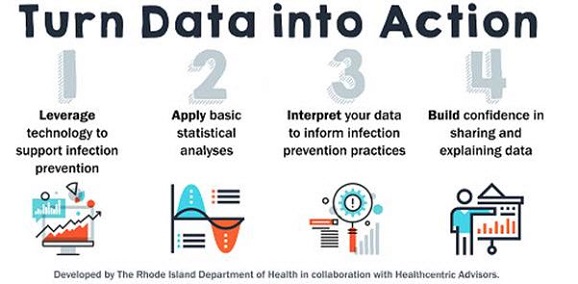HAI Summary:
HAIs: What They Are?
Healthcare-acquired infections (HAIs), also known as nosocomial infections, are infections that patients get while receiving treatment for medical or surgical conditions. HAIs occur in all settings of care, including hospitals, surgical centers, ambulatory clinics, and long-term care facilities such as nursing homes and rehabilitation facilities.
Who's At Risk?
All hospitalized patients are susceptible to contracting a nosocomial infection. Some patients are at greater risk than others-young children, the elderly, and persons with compromised immune systems are more likely to get an infection. Other risk factors are long hospital stays, the use of indwelling catheters, failure of healthcare workers to wash their hands, and overuse of antibiotics.
In American hospitals alone, the Centers for Disease Control (CDC) estimates that HAIs account for an estimated 1.7 million infections and 99,000 associated deaths each year. Of these infections:
- 32 percent of all healthcare-acquired infection are urinary tract infections
- 22 percent are surgical site infections
- 15 percent are pneumonia (lung infections)
- 14 percent are bloodstream infections
What's at Stake?
Patients who acquire infections from surgery spend, on average, an additional 6.5 days in the hospital, are five times more likely to be readmitted after discharge and twice as likely to die. Moreover, surgical patients who develop infections are 60 percent more likely to require admission to a hospital's intensive care unit. Surgical infections are believed to account for up to ten billion dollars annually in healthcare expenditures.
What are Providers Are Doing to Prevent HAIs?
Recent reports have shown that many HAIs can be prevented through strict adherence to evidence-based best practices. Recommendations include:
- healthcare providers cleaning their hands with soap and water or an alcohol-based hand rub before and after caring for every patient;
- catheters being used only when necessary and removed as soon as possible;
- cleaning the skin where the catheter is being inserted or the surgical site, and
- providers wearing hair covers, masks, gowns and gloves when appropriate.
Healthcare providers are making great strides to reduce, and in some cases eliminate, HAIs. In this section, resources are identified and case study examples are highlighted to assist healthcare providers to improve the prevention of HAIs.
How Can You Protect Yourself Against HAIs?
The CDC has released these example questions for patients to raise to their nurses and doctors to protect themselves from Healthcare-associated Infections.
CDC Checklist for Core Elements of Hospital Antibiotic Stewardship Programs
The checklist (link below) is a companion to Core Elements of Hospital Antibiotic Stewardship Programs. This checklist should be used to systematically assess key elements and actions to ensure optimal antibiotic prescribing and limit overuse and misuse of antibiotics in hospitals. CDC recommends that all hospitals implement an Antibiotic Stewardship Program.
CDC - HAI Reduction and Implementation Tool Kits
The American Recovery and Reinvestment Act of 2009, Public Law 111-5 (ARRA), was signed into law on February 17, 2009. Within the Recovery Act, $50 million was authorized to support states in the prevention and reduction of healthcare-associated infections. Many of these funds are being used to support activities outlined in the HHS Action Plan to Prevent Health Care-Associated Infections. This CDC site tracks states' efforts to meet the goals of the plan and the results can be located on the CDC Healthcare-Associated Infections: Recovery Act site. CDC is assisting states in this process with implementation tool kits located at Premier's Safety Institute's Healthcare-Associated Infection Web site.

Cambridge Health’s Team Culture Reduces Infections
Cambridge Health Alliance undertook an Agency for Healthcare Research & Quality-sponsored 15-month safety improvement program to reduce infections in the ICU at its Cambridge and Everett hospitals. The effort – involving an assessment of potential problems, increased staff education, use of proven best practices, leadership buy-in and more – resulted in a dramatic reduction in urinary tra...» Full Article
Healthcentric Advisors – No Cost Learning Center
Healthcentric Advisors would like to invite you to visit The Learning Center, our no cost virtual online learning system, with an Introduction to Statistics and Epidemiology in Infection Prevention. Through this interactive and self-paced module, you will learn about statistical and epidemiological methods that are used in infection prevention and control. New courses will also cover interpreting ...» Full Article
